Consolidation and practice
These resources are to support children in guided or independent work. Roll over the highlighted resource for a description.
Play train
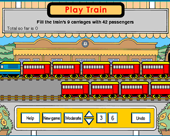
You need Java enabled in your Web browser to run this program.
Polygon
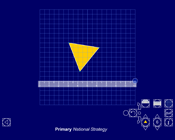
This interactive teaching program (ITP) is an ICT-based tool to support the exploration of shape, space and measure. Polygon ITP allows the child or teacher to represent regular polygons with three to ten sides. The ITP can then be used to explore the properties of regular and irregular shapes by dragging vertices and creating additional vertices. The ITP includes an on-screen protractor and ruler.
Fixing points
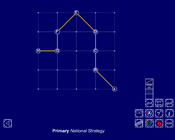
This interactive teaching program (ITP) is an ICT-based tool to support the exploration of shape and space. Fixing points ITP allows the child or teacher to create one or more shapes by connecting a number of vertices on a grid. Angles can be estimated and measured, and the effect of moving different vertices can be explored.
Opportunities to use and apply
Possible contexts include:
- number facts, e.g.
20 + 0 = 20
19 + 1 = 20
18 + 2 = 20 …
Continue this list and describe the patterns you can see.
- real-life problems, e.g. Organise a rota for tidying the cloakroom.
- number problems and puzzles, e.g. Two numbers have a product of 24 and a difference of five. What could you write down to help you find the two numbers?
- science, e.g. Collect data about cooling liquids over time, such as the temperature of cooling tea every five minutes. Record the results in a table.
Confirming learning
Ask probing questions such as:
- In my purse I have lots of £1, 10p and 1p coins. I pick out two coins. Use a table or a list to record which two coins I could have. What possible totals could I have picked?
- We think most children in our class walk to school. Explain how you could find out whether this is true. What would you record?
- What lists or tables can you see in the classroom? Explain how and why you might use them.
- Can you tell me three things from this frequency table?
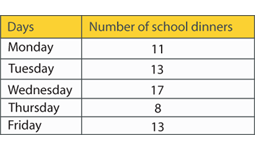
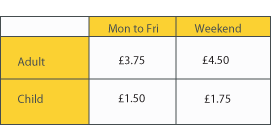
 Handling data
Handling data



